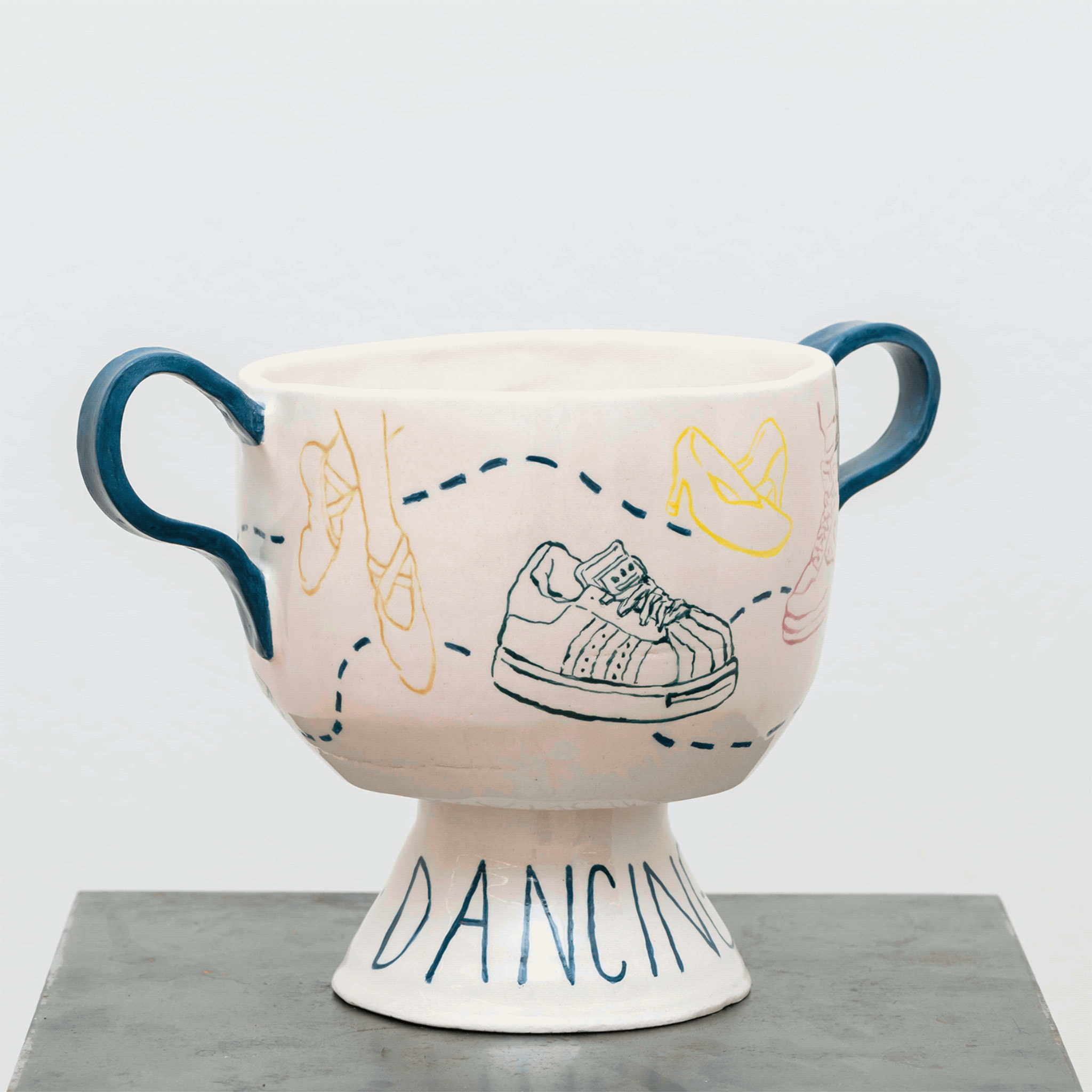
Dancing Shoes
oil on canvas // 185x165cm // 2022

Dancing Shoes
oil on canvas // 185x165cm // 2022

Dancing Shoes
oil on canvas // 185x165cm // 2023

Dancing Shoes
oil on canvas // 185x165cm // 2023

Dancing Shoes
oil on canvas // 80x80cm // 2022

Dancing Shoes
oil on canvas // 80x80cm // 2022


Dancing Shoes
ceramic // 19cm (length), 28cm (diameter) // 2022

Club Paradise
oil on canvas // 80x60cm // 2023

Club 21
oil on canvas // 80x60cm // 2023
Since ancient times, dance has been an act of transcendence that allows people to stand outside time in sacred rituals, inviting them into the reality of the unknown and illustrating the power of humans acting together. Dance is the union of the human body and spirit, a way of passing from one state to another, a most relieving way of transformation, helping people feel part of
a community, perhaps the most animalistic, purest state of the human identity.
Throughout the ages, dance has gone beyond the limits of the body and become a social act, a form of resistance. Black people
in Puerto Rico stood up to oppression with the Bomba, a dance of resistance. This dance movement was followed by the Vogue, another dance of resistance named after the fashion magazine on whose covers models adopted a variety of stylized poses.
In the 1970s and 80s, this dance represented a resistance against dominant notions of gender, beauty and sexual orientation.
Today, many subcultures have countless dances of their own. People from various ethnic, social and class backgrounds dance together, often competitively, in so-called “battles”, held mostly in public space. These dance battles, while being non-violent,
are commonly made spectacles in their own right by the heat of the competition they host.
In his series titled Dancing Shoes, Sabo enacts a spectacle reminiscent of a dance of resistance, rendering dance independent
of all its rules to point at its inherent social inclusiveness. In addition to emphasizing the transformation of dance in the face of time, he also foregrounds inclusiveness as a means of freely expressing the gender and sexual identities he has felt and chosen.
By using vivid, contrasting colors, blurring and sharpening the figures and using a variety of brush techniques, the artist reflects this dazzling, slippery plane of existence on his canvases. These figures overflow the frames designated by the artist. In the other two works, he depicts facial portraits of the people carefully watching this scene which harbors such definitions as fight,
spectacle and competition. The tension in the competition in the middle of carefully delineated spaces of dance also manifests the relationship between spectator and performer, between the moving and the stationary.
On the other hand, as we get closer to the faces of the spectators, we are met by different views and different stories. Spaces, brush strokes in a variety of rhythms further emphasize the expressions of the spectators. While the gaze of a person watching the dancers seems to linger in their unpredictable inner world, the other’s eyes are squinting, with a fine grasp of their targets.
In his series titled Dancing Shoes, Sabo takes dance out of being a performance that frames the human body, identity and sexuality, telling the story of how it can again return to its initial state, the free expression of emotions by the body.
He emphasizes that dance always takes place in a space, that it is bound to a scene and to limits, as he depicts the distance between the performer and the spectator in his portraits.
Elâ Atakan 2022










